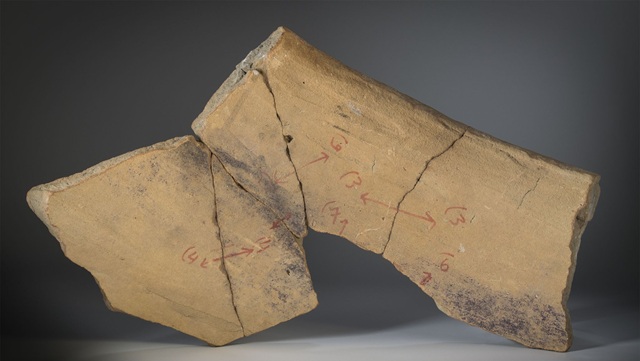A groundbreaking archaeological study by the University of Haifa, published in PLOS One, has uncovered direct evidence of tools used to produce the prestigious scarlet dye during the Iron Age (1100–600 BCE), overlapping with the First Temple period. The research sheds light on the ancient dyeing industry at Tel Shikmona, one of the most important production centers along the Levantine coast.
Archaeologists discovered large clay basins stained with scarlet dye, grinding stones, and additional tools that played a central role in the dyeing process. These findings enable researchers to reconstruct the stages of dye production and offer the first detailed look at the physical tools used in this elite industry.
“This is the first time we can fully reconstruct the shape and function of the tools used in the scarlet dye industry,” said Dr. Golan Shalvi of the Zinman Institute of Archaeology at the University of Haifa, who co-led the research with Prof. Ayelet Gilboa, in collaboration with the University of Chicago.
The findings discovered in the current study at Tel Shikmona provide direct evidence of the wide scope of the scarlet production industry at the site. The researchers uncovered dozens of large clay basins, which were likely used both for producing the dye and for dyeing yarn or fleece. The reconstruction of the vessels suggests that they were about one meter high, had a volume of about 350 liters, and ranged in diameter from 60 to 80 cm – dimensions that allowed for the immersion of entire woolen fleeces. Analysis of the data indicates that the use of these basins enabled a continuous and particularly efficient work process, a characteristic that indicates advanced planning and an industrial production system.
“For the first time, we identify a complete production system, in which significant quantities of scarlet dye were produced in dedicated tools that were used to streamline the process,” said Prof. Gilboa. “The fact that at certain periods at least 16 basins were used simultaneously indicates that Shikmona was a production center on an extraordinary scale for its time.”
According to Dr. Shloy, the unearthed tools used for scarlet production hold significance far beyond their technical function. They illuminate the extensive scale of the luxury goods industry, the reach of its trade, and the underlying economic growth and ambition of the Kingdom of Israel as it became a major regional force. This discovery, he added, even sheds light on the historical context of biblical stories that depict the Kingdom of Israel’s power during substantial periods.




